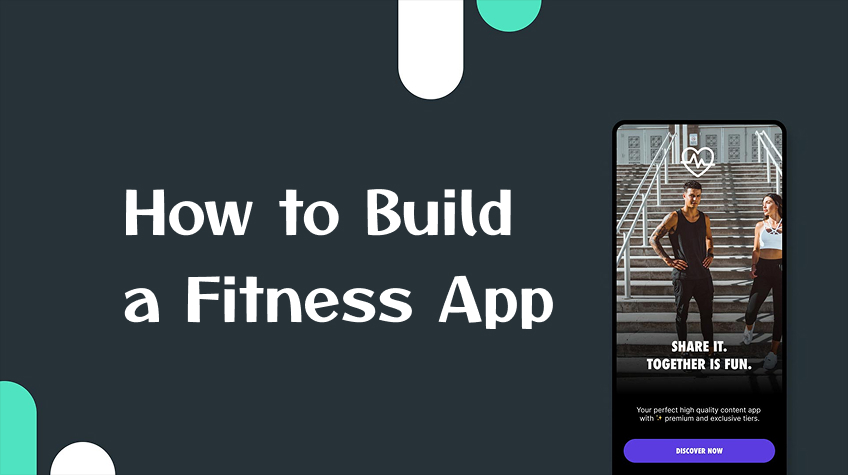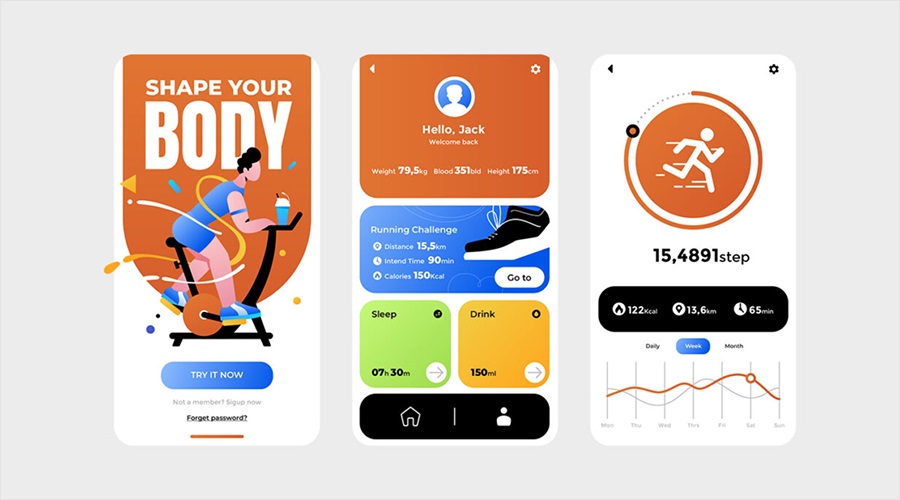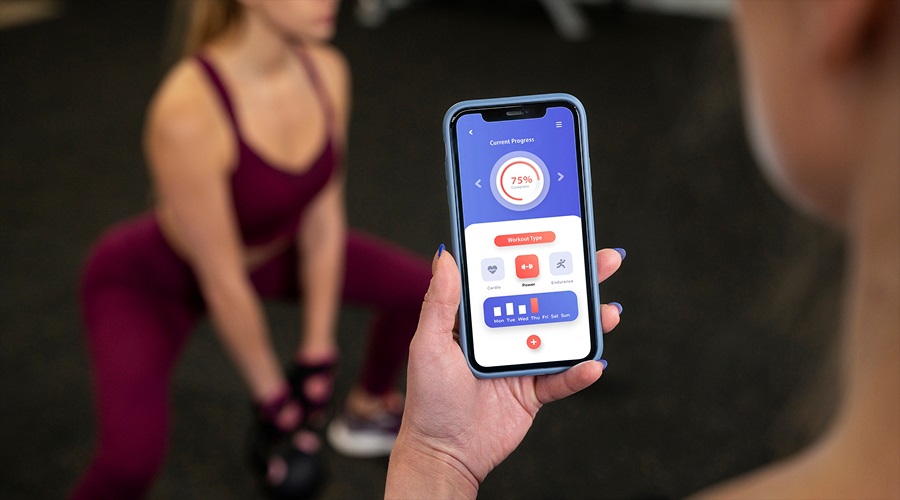
As a mobile app development company, we have witnessed an incredible surge in the number of fitness-oriented digital products. Whether it is personal wellness trackers or AI-generated workout programs, fitness apps are becoming more and more popular. So, whether you’re a fitness startup, gym owner, or wellness brand, developing a fitness app in 2025 is a great idea, but where do you start?
Here in this blog, we will discuss all the essential steps involved in developing a fitness app, along with the costs that are likely to be involved, and what tech stack would be most appropriate to implement your idea.
Why Build a Fitness App in 2025?

The market of fitness apps is projected to pass the mark of 25 billion dollars by 2026, mainly due to a growing consciousness regarding personal health, the inclusion of wearables, and the ability to customize the training process. There is a shift in how fitness is consumed, with home workouts, virtual fitness coaches, and fitness communities taking the front seat. These are some of the reasons to develop an app in the fitness sector today:
- The increased demand for home-based and hybrid fitness solutions.
- Potential of subscription-based revenues.
- Reach an international audience.
- The possibility of being integrated with a wearable, such as an Apple Watch, a Fitbit, etc.
- Individual health suggestions by AI.
Types of Fitness Apps You Can Build

Before getting into development, determine what type of fitness app you desire. The most preferred models are the following:
- Workout Apps: Will give you exercise routines and guide you via video or audio.
- Activity Tracking Apps: Count steps, calories, distances, sleep, and more.
- Nutrition & Diet Apps: Provide meal plans, food count, and macro tracking.
- Personal Trainer Apps: Allows trainers to design and track individual plans of clients.
- Yoga and Meditation Apps: Center on mindfulness, breathing, and guided yoga.
- All-in-One Wellness Apps: Blend fitness, nutrition, and mental wellness.
Step-by-Step Guide to Building a Fitness App

1. Define Your Target Audience
The first and most important action in the process of creating a successful fitness app is defining for whom you are creating the app. Who are you targeting, busy professionals, novices, athletes, the elderly, or some smaller groups of people, e.g., new mothers? By knowing your potential users’ fitness motivations, needs, fitness aims, difficulties, and tastes, you can control the features, content, and design of the app to make sure your product offers actual content and makes people stay hooked.
2. Choose Core Features
What you require to create a successful fitness app in 2025 are features that are easy to use, motivational, and advanced. Today, users require a personalized experience, connectivity with smart devices, and tools that allow them to remain consistent. Your app can be a source of joy in your fitness lifestyle and include AI-based workouts and socializing. The following is a set of key features that we, as a mobile application development company, suggest incorporating in any contemporary fitness app:
- User Profiles and Goal Setting
- AI-Powered Workout Suggestions
- Wearable Device Integration
- Exercise Library with Video Tutorials
- Voice and Smart Assistant Support
- Nutrition and Meal Planning
- Progress Tracking Dashboard
- Social Features and Community Challenges
- Gamification Elements
- Push Notifications & Reminders
3. Pick a Monetization Model
The successful long-term performance of your app depends on the selection of the relevant monetization model. Frequent models are freemium (basic free features with paid upgrades), subscriptions, in-app purchases, and advertisements. Select the model to fit your willingness to pay and the value of the app to your audience. The fitness apps that provide continuous support and content in terms of help and assistance usually involve subscription-based plans.
4. Choose the Right Technology Stack
The selection of the tech stack is a critical area in the process of developing the fitness app, ensuring good performance, easy scalability, and compatibility with the latest equipment. In 2025, the expectations are to have real-time syncing, AI-based suggestions with a clean and quick-to-use interface. Being a credible mobile app development company, we suggest using cross-platform tools, such as:
For Frontend (Mobile App):
- React Native or Flutter (cross-platform)
- Swift (iOS) and Kotlin (Android) for native apps
For Backend:
- Node.js or Django (Python)
- Firebase for rapid MVPs and real-time database
- PostgreSQL or MongoDB for the storage of data
APIs & Integrations:
- Apple HealthKit or Google Fit API
- Stripe or Razorpay for payments
- Twilio for SMS notifications
- Zoom or Agora for live workouts
- OpenAI or TensorFlow for AI-powered recommendations
Cloud & Hosting:
- AWS or Google Cloud
- Firebase Cloud Functions for scaling an MVP
Analytics:
- Firebase Analytics
- Mixpanel or Amplitude for deep behavior tracking
5. Ensure Data Privacy and Compliance
Fitness apps handle sensitive health data, and the privacy of the user both are not negotiable. In 2025, your app needs to comply with regulations like GDPR, HIPAA, and other data policies in the region. It means the use of encrypted data storage, secure entered logins, and giving data control to users. As a mobile app development company, security in its essence is given the highest priority by us, and we take steps, like two-factor authentication and role-based access, so that user data does not get compromised and is of high credibility.
6. Test for Performance and Bugs
The essential issue when producing a competent and steady fitness app is extensive testing. All featured functions have to be tested before the launch stage against bugs, performance, and compatibility with various gadgets. We, being a regarded development firm, test it thoroughly at the unit level, UI/UX, and load checks so the app functions perfectly even in a real-world scenario. We make sure that your mobile app is speedy and crash-free and is ready to serve its users on the first day of release.
7. Launch and Market the App
After you develop your fitness app, marketing it properly is just as important as it is to create a fitness app. Market your application via social networks, sports mentors, and special advertising to address your target demographic. Being a reputable mobile app development company, we also assist our clients in conducting pre-launch campaigns and in-app referral schemes in order to gather early traction and increase installs.
8. Post-Launch Support and Updates
Once you have it launched, it is essential to engage in continuous improvement to ensure fitness app relevance and competitiveness. The continuous improvements, bug fixes, and feature introductions serve to keep people interested in using it. Monitor feedback and user performance to track progress. We have a long-term support provision strategy that is aimed at keeping your app relevant to the updates of operating systems, new devices, and user requirements.
Also Read: Empowering Fitness App Developers: Innovations and Strategies
How Much Does It Cost to Build a Fitness App in 2025?

Here’s a rough estimate based on our different app development projects:
| Feature Set | Approx. Cost (USD) | Timeline |
|---|---|---|
| Basic MVP | $15,000 – $30,000 | 6–10 weeks |
| Mid-Level App (AI, wearable sync, videos) | $40,000 – $80,000 | 3–5 months |
| Full-Scale App with AI, IoT, AR, and social features | $100,000+ | 6–9 months |
Future Trends in Fitness App Development
To stay ahead of the competition, consider these futuristic ideas:
- AR-Based Workouts: Overlay routines in real-world surroundings
- AI Fitness Trainers: Digital agents providing real-time advice
- Emotional Well-being Monitoring: Mood and stress monitoring in sync with physical activity
- Blockchain in Fitness Rewards: This is associated with decentralized feedback for completing targets.
We believe that in the coming 2-3 years, we will see these features become normal in fitness apps.
Conclusion
In summary, the fitness sector is led by personalization, AI, and real-time connectivity in 2025. Developing a fitness application involves pre-planning, proper technology, and a focus on the consumer. We are a credible mobile development company with extensive experience in developing fitness applications, AI applications, and wearables. Whether you are developing a niche or an end-to-end product, now is the time. Therefore, we can make it come true in case you have an idea for a fitness app.






